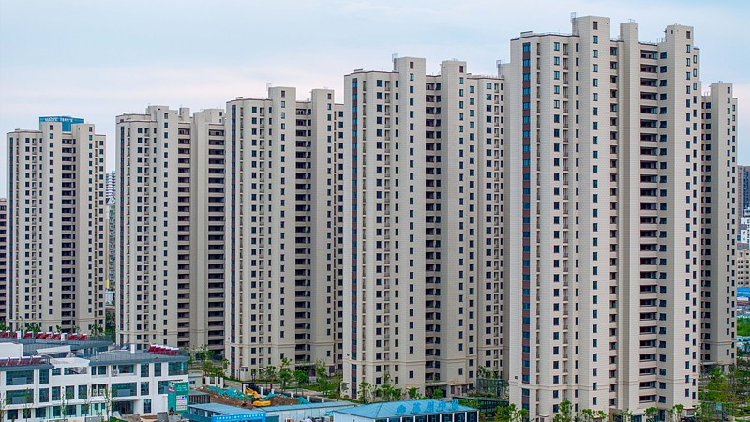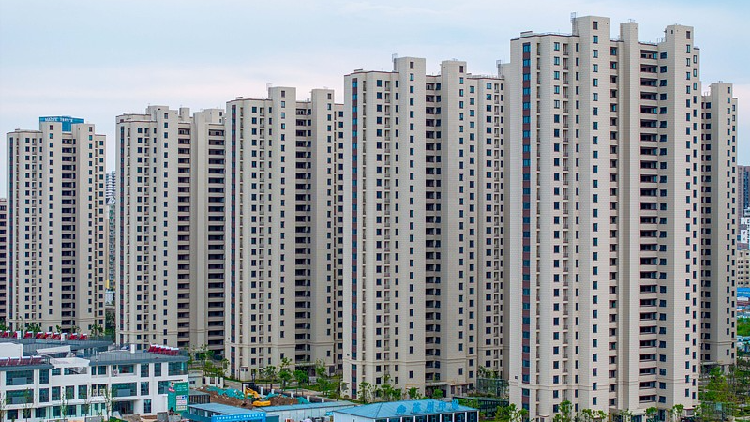Key takeaways from CPC leadership's meeting on economic work


Xi Jinping, general secretary of the Communist Party of China (CPC) Central Committee, presided over a meeting of the Political Bureau of the CPC Central Committee on Thursday at which the current Chinese economic situation was analyzed and studied and further arrangements for economic work were made, sending a strong signal to stabilize the world’s second-largest economy’s growth.
The fundamentals of the Chinese economy and favorable conditions, such as a vast market, strong economic resilience and great potential, remain unchanged, but there are some “new situations and problems” in the current economic landscape, according to the meeting.
“It is necessary to take a comprehensive, objective and calm view of the current economic situation, face the difficulties squarely and remain confident,” noted the meeting.
China should effectively implement existing policies, step up efforts to roll out incremental policies, further make policy measures more targeted and effective, and strive to accomplish the targets and tasks for this year’s economic and social development, stressed the meeting.
It was the first time that a meeting of the Political Bureau of the CPC Central Committee to arrange economic work was held in September, which signals the Chinese leadership’s commitment to stabilizing growth and managing expectations, Founder Securities, a Chinese company that provides financial services, said in an analysis report hours after the meeting.
Here are some key takeaways from the meeting.
Fiscal and monetary policies
The meeting of the Political Bureau of the CPC Central Committee stressed the importance of increasing the counter-cyclical adjustments of fiscal and monetary policies.
It highlighted the need to issue and make good use of ultra-long special treasury bonds and local government special-purpose bonds to better leverage the driving role of government investment and to lower the reserve requirement ratio (RRR) and implement impactful interest rate cuts.
China’s central bank, the People’s Bank of China (PBOC), on Tuesday announced a package of monetary easing policy measures that have surpassed market expectations.
PBOC governor Pan Gongsheng said on Tuesday that China will cut the RRR by 0.5 percentage points in the near future, providing about 1 trillion yuan (about $141.78 billion) in long-term liquidity to the financial market. Depending on the liquidity situation in the market, the RRR may be further lowered by 0.25 to 0.5 percentage points within the year, releasing up to 2 trillion yuan in liquidity and potentially helping reduce banks’ liability costs by about 8 billion yuan, said Pan.
The central bank will also reduce the interest rate of seven-day reverse repurchases from 1.7 percent to 1.5 percent. Pan said the reduction was aimed at guiding the loan prime rate and deposit rate to move downwards and maintaining stability in the net interest margin of commercial banks.
Property market
The meeting of the Political Bureau of the CPC Central Committee on Thursday also pledged to make more efforts to stabilize the property market and reverse its downturn.
China’s large- and medium-sized cities saw month-on-month declines in both new and second-hand home prices in August, data from the National Bureau of Statistics showed.
It is essential to strictly regulate the increase in commercial housing construction, optimize existing inventory and enhance quality, said Thursday’s CPC leadership meeting, which also stressed the need to boost lending for “whitelist” projects and facilitate the revitalization of idle land.
Commercial banks have approved over 5,700 “whitelist” projects, with approved financing reaching 1.43 trillion yuan and support for the on-time delivery of over 4 million housing units, Li Yunze, head of the National Financial Regulatory Administration, said at a press conference on Tuesday.
Thursday’s meeting also stressed the importance of responding to the people’s concerns. Efforts should be made to adjust the policy of housing purchase restrictions, lower interest rates on existing mortgage loans, promptly improve land, fiscal, tax and financial policies, and promote the establishment of a new model for real estate development.
The PBOC said on Tuesday that China will lower mortgage rates on existing home loans to a level similar to those of newly issued housing loans, with the average reduction in mortgage rates for existing home loans expected to be around 0.5 percentage points.
“The new policy, which is conducive to further reducing borrowers’ mortgage interest expenses, is expected to benefit 50 million households, or a population of 150 million,” said Pan, the PBOC governor.
This move is expected to reduce the total interest expenses for households by approximately 150 billion yuan per year on average, which will help boost consumption and investment, he added.
The minimum down payment ratio for both first and second homes will be unified, with the nationwide minimum down payment ratio for second homes being reduced from 25 percent to 15 percent.
<img src='https://news.cgtn.com/news/2024-09-26/Key-takeaways-from-CPC-leadership-s-meeting-on-economic-work-1xdAd0MggVO/img/a8eb1a8f127643038078dbd618d59f71/a8eb1a8f127643038078dbd618d59f71.png' alt='A property development project under construction in Huai'an City, east China's Jiangsu Province. /CFP'
Capital market
The meeting called for efforts to boost the capital market, vigorously guide medium- and long-term funds to enter the capital market, and clear the obstacles for social security, insurance and wealth management funds to invest in the capital market.
Mergers, acquisitions and restructuring of the listed firms will be supported, the meeting noted, urging efforts to steadily advance the reform of publicly-offered funds, and mull over and introduce policy measures to protect small and medium-sized investors.
On Tuesday, China’s central bank, top securities regulator and financial regulator announced a raft of monetary stimulus, property market support and capital market strengthening measures to boost the country’s high-quality economic development.
China will also implement a raft of measures to promote the market entry of medium- and long-term capital, in a move to invigorate its capital markets, according to a guideline issued by the office of the Central Financial Work Commission and the China Securities Regulatory Commission on Thursday.
Key measures outlined include the development of a market environment that encourages long-term investments and the improvement of the quality of publicly listed companies. The guideline advocates the expansion of public equity funds and supports the stable development of private equity investment funds. Additionally, the guideline seeks to refine policies and institutions that facilitate the entry of diverse medium- and long-term capital.
It aims, among other things, to significantly increase the scale and proportion of medium- and long-term capital investments, create a more balanced structure of capital market investors, strengthen the long-term nature of investment behaviors, and enhance the inherent stability of the market, while steadily improving investor returns.
Private economy, employment, elderly care and childcare
Thursday’s meeting also underlined the necessity to roll out a private economy promotion law and foster a favorable environment for the development of the non-public sector.
Efforts should be made to increase the incomes of middle and low-income groups and improve the consumption structure, according to the meeting.
The meeting called for efforts to support and standardize social forces in developing elderly care and childcare industries, and to refine pro-childbirth policies. It urged efforts to advance and implement reform measures regarding the market access of foreign capital to the manufacturing sector, and further optimize a first-rate business environment that is market-oriented, law-based and internationalized.
The meeting stressed prioritizing employment support for key groups such as fresh college graduates, rural migrant workers, individuals just lifted out of poverty and zero-employment households.
Assistance will be stepped up for those facing difficulties in securing jobs, including the elderly, people with disabilities, and those unemployed for a long time, the meeting said, adding that more assistance will also be provided to low-income population.
Chinese authorities on Wednesday unveiled a guideline for promoting high-quality and sufficient employment by implementing the employment-first strategy.
The document urges efforts to create more high-quality jobs, including transforming and upgrading traditional industries, fostering and strengthening emerging industries, developing future industries and accelerating the development of advanced manufacturing clusters.
(With input from Xinhua)





